A Comparative Analysis of Tokugawa Japan and Medieval Europe: Report
VerifiedAdded on 2020/10/22
|5
|680
|146
Report
AI Summary
This report provides a comparative analysis of the social and military features of Tokugawa Japan and Medieval Europe. It examines the warrior classes, societal structures, and military strategies of both periods. The report begins by outlining the distinct characteristics of Tokugawa Japan, including its social hierarchy and the role of the samurai, and contrasts this with the military and social dynamics of Medieval Europe, with specific attention to the role of knights and the impact of warfare. The report also highlights the differing historical contexts and evolutions, including the impact of the Meiji Restoration and the technological developments influencing military tactics. Concluding that the report indicates the dissimilarities between the two regions, and the report uses references to support the arguments.
1 out of 5
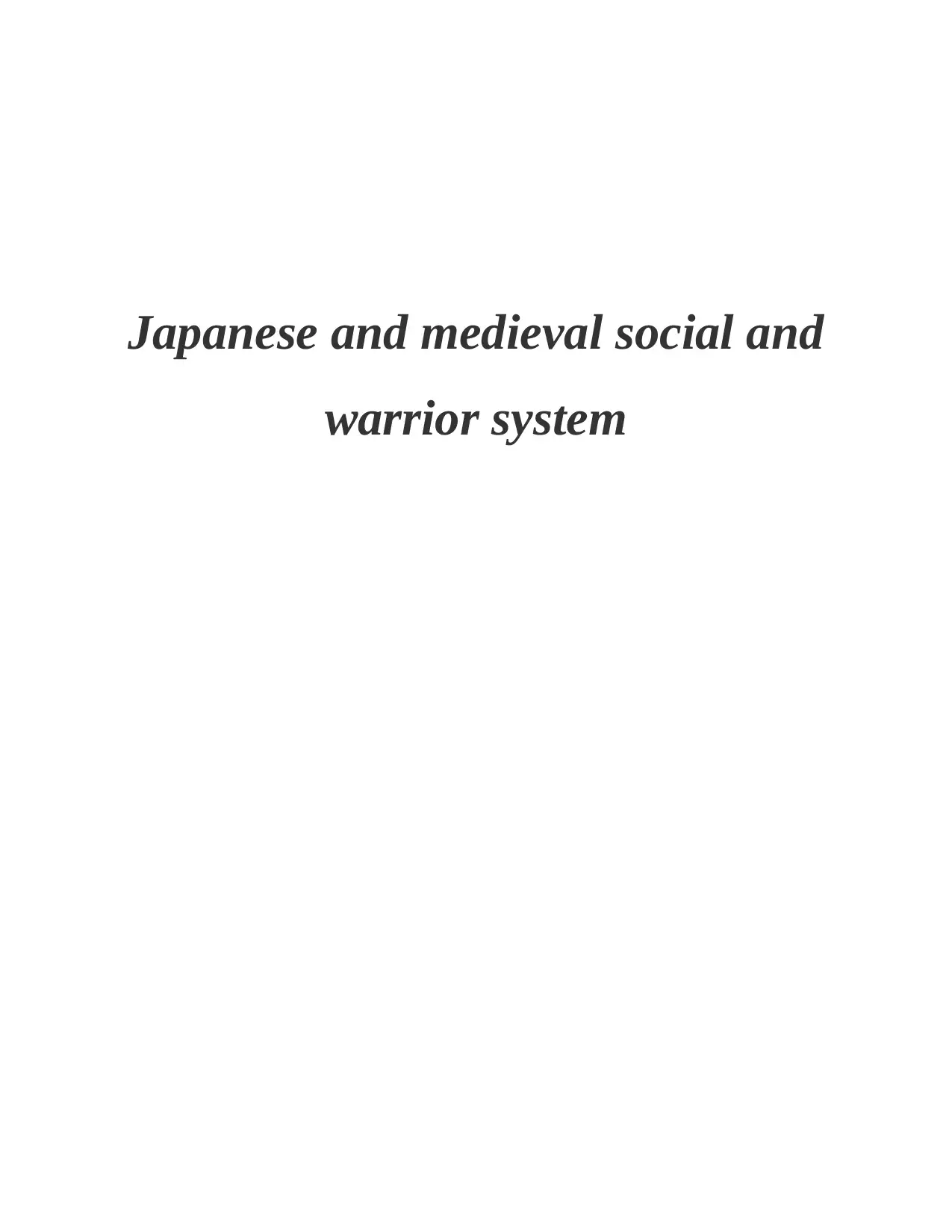
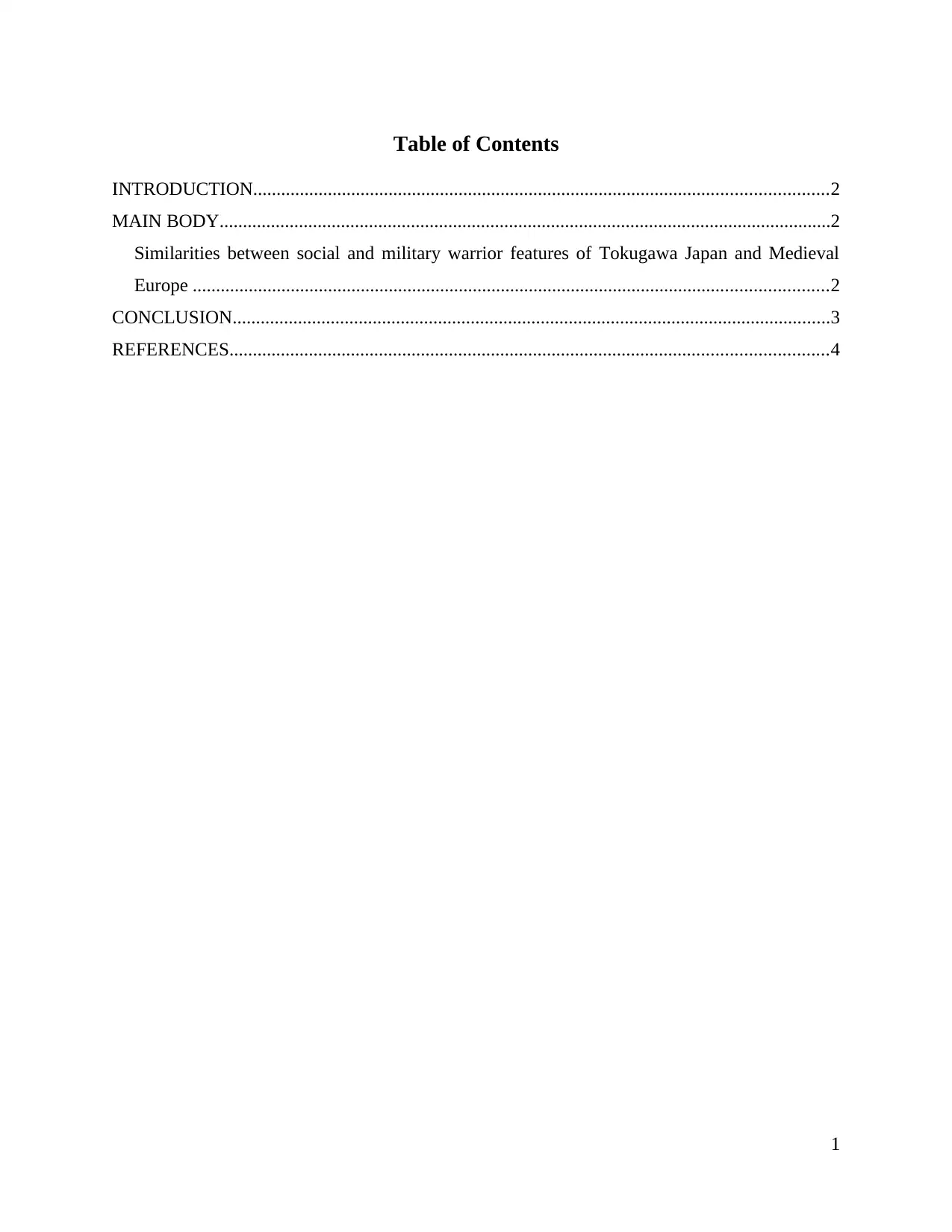
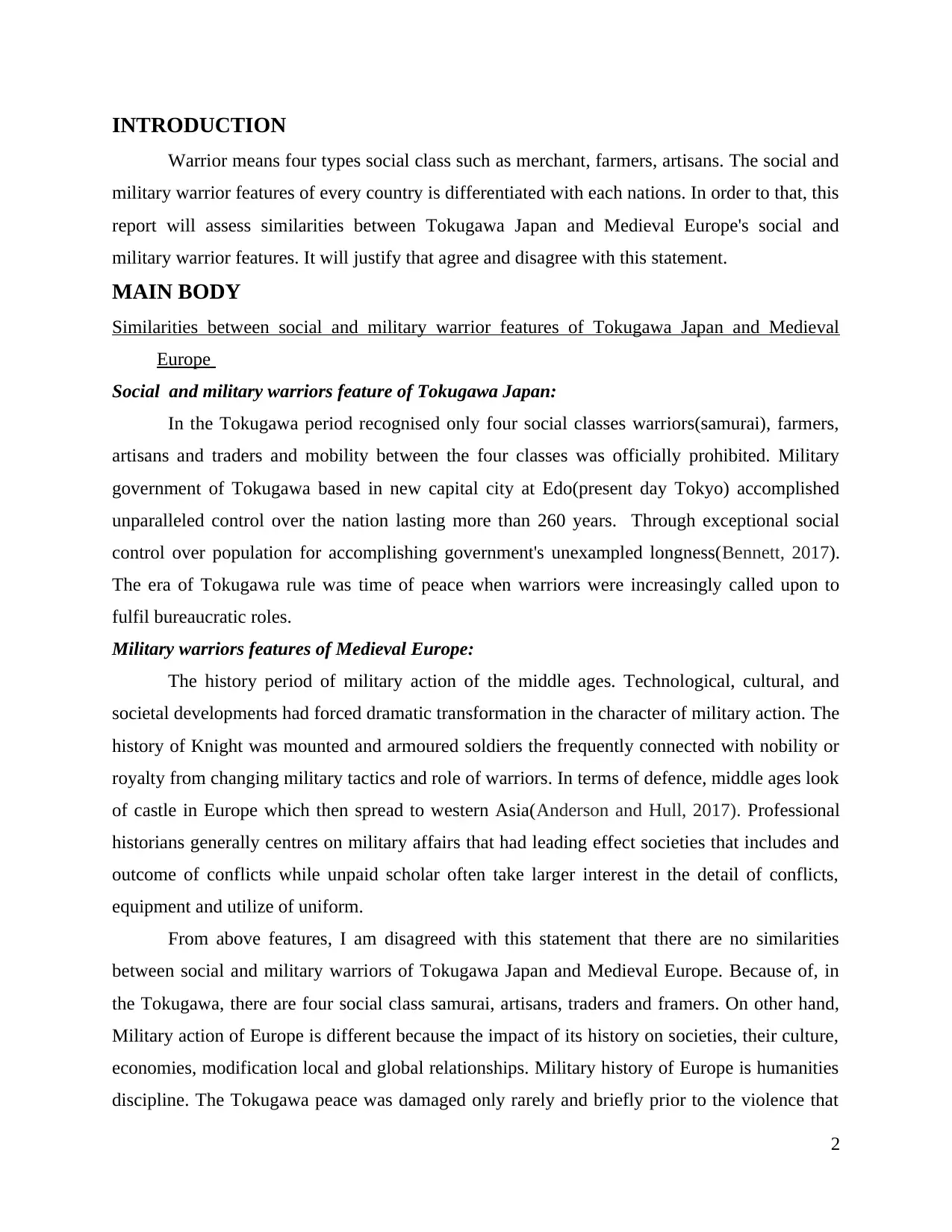

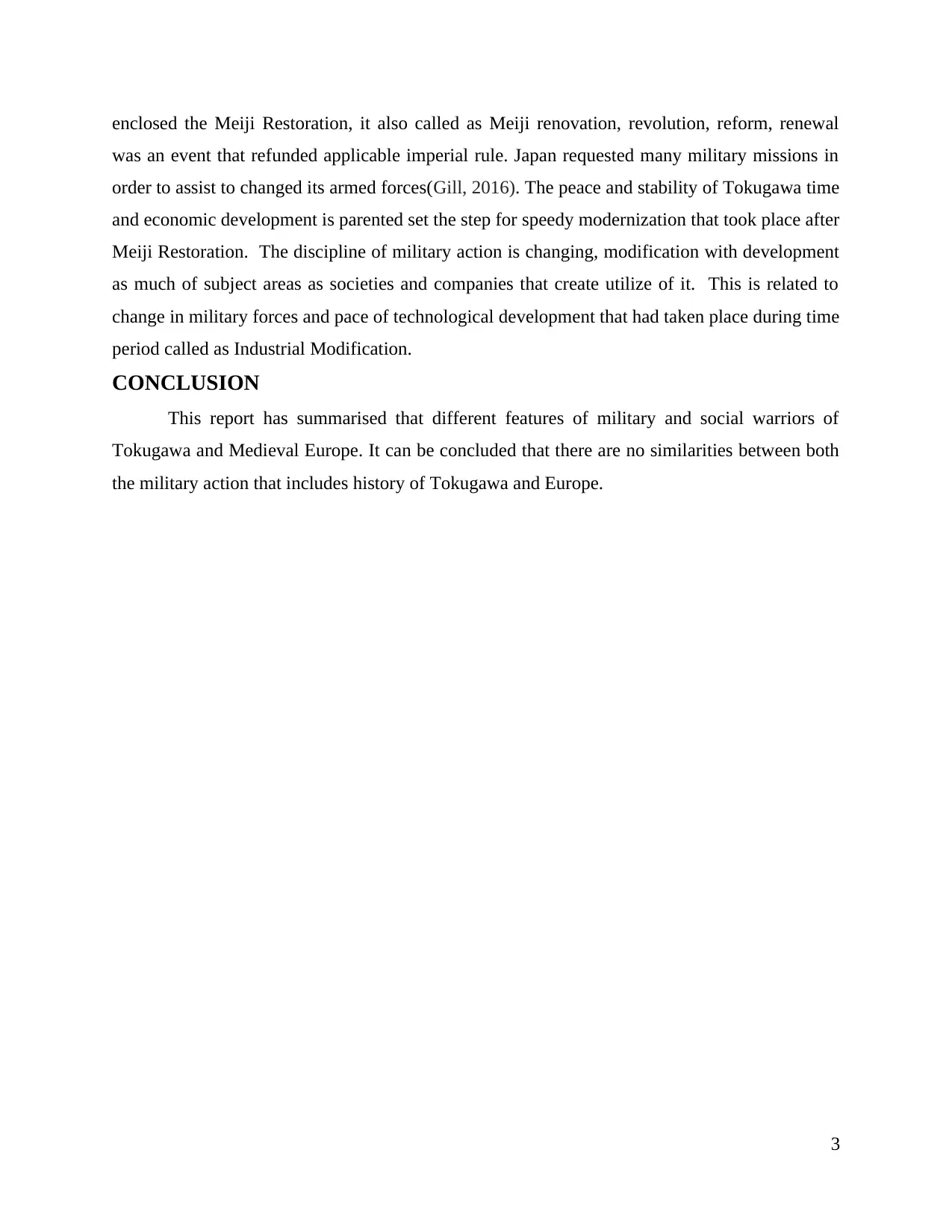
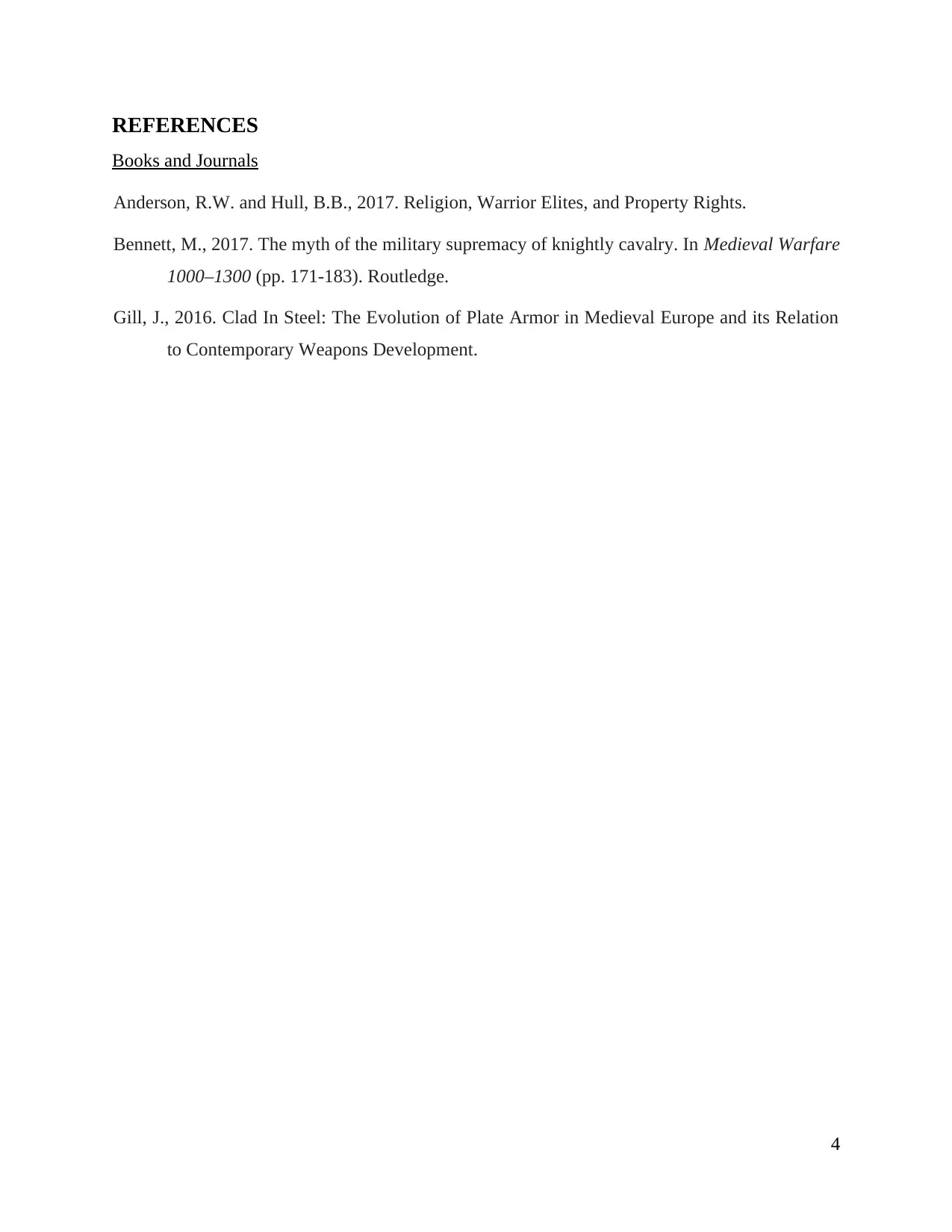
![[object Object]](/_next/static/media/star-bottom.7253800d.svg)